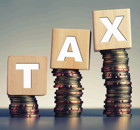Be prepared

In the last few years, the energy management landscape has changed considerably and will undoubtedly change again in the future.
The scrapping of the Carbon Reduction Commitment (CRC) in 2019 and the introduction of the government’s new Streamlined Energy & Carbon Reporting (SECR) aims to bring the schemes under a single directive with the potential to report on carbon emissions through company accounts.
Currently, the framework for SECR is under review and there are other frameworks being examined by the Department for Business, Energy & Industrial Strategy (BEIS).
Amongst all this change, one of the UK’s biggest energy taxes, Climate Change Levy (CCL), is set to be segregated from SECR with substantial increases in the rates from the 1st April 2019. It is therefore a good time for business to understand what CCL is and how, where possible, they can mitigate this cost.
CCL is a tax on non domestic supplies of energy, which are described as ‘taxable commodities’. These are: electricity, gas, liquid petroleum gas, coal, coke and similar products. It was introduced in the Finance Act 2001 and it applies to industrial, agricultural, commercial and public sectors. CCL is charged directly by the energy supplier and paid to HM Revenue & Customs. However, it should be noted that some charities and businesses with low energy use are exempt.
Since 2005, CCL has increased year-on-year based on the average retail price index (RPI), as shown in table 1. The current (2018) rates stand at £0.00203 per kWh for gas and £0.00583 per kWh for electricity.
 |
| Table 1 |
Rates increase
From 2019, the rates increase considerably to £0.00339 per kWh for gas and £0.00847 for electricity. Compared to the 2017/18 rates, this is an average increase of 56% in CCL costs across sectors. 2020/2021/2022 rates will be announced in the Chancellor’s Autumn Budget 2018.
Table 2 shows the cost difference based on the 2017/2018 rates versus 2019/2020 rates to understand the impact these changes will have. Using actual energy data from seven key sectors shows that across the board there is an average increase of 56% on CCL costs, with hotels, hospitals and supermarkets being the biggest sectors affected. These figures represent the increase in CCL payments, assuming no increase in energy consumption.
However, there are exemptions and reliefs from CCL; such as Climate Change Agreements (CCAs) or through installing on-site generation such as CHP. These CCAs are a voluntary contractual agreement between an organisation and the Environment Agency (EA). The organisation, usually an industrial company, agrees to report energy use against a target to the Agency. CCAs focus heavily on manufacturing industries and give little relief to businesses outside of this sector when it comes to CCL.
The alternative source of reduced CCL payments for other sectors such as hotel and leisure could be through installing on-site generation. It may be that now is the time to consider turning to renewable sources of energy and heating, such as combined heat and power (CHP).
Heating up
For the right site and business/ building type, using CHP can be one of the best ways to improve energy efficiency and reduce energy costs, with existing users generally saving around 20% on their energy bills.
If your site is suitable for CHP, it is crucial to have your installation successfully registered with the BEIS’ CHP Quality Assurance (CHPQA) Programme. By doing this, you can apply for exemption from CCL on the gas used by the CHP unit.
 |
| Table 2 |
To maintain your CCL exemption, you must submit annual operational data to the CHPQA programme and carry out yearly CCL reconciliation. This entails determining the CCL paid in the previous year and retrospectively applying an actual exemption based upon an issued CHPQA certificate.
Successful CHPQA certification grants eligibility to a range of benefits, including Contract for Difference, Renewable Heat Incentive, Enhanced Capital Allowances and preferential business rates.
There is also a requirement under the programme to install meters and carry out regular verification. Having a heat meter installed allows you, with regular verification, to record the useful heat supplied by the CHP, giving you a better indication of how the unit is performing. All new CHP units should come fitted with heat meters as standard.
Heat meter verification should be carried out every two years and is particularly important to satisfy BEIS/CHPQA that a site is accurately recording its heat usage.
To sum up
CCL is only a small part of a vast energy policy and legislation landscape but its impact on UK business is a large one. These rates will continue to rise and the cost to business will increase year on year. If you are unsure of what your CCL costs are, it is recommended you check your energy bills. CCL is often shown as a separate line item, usually above the VAT line.
Sebastian Gray is director of 2EA







